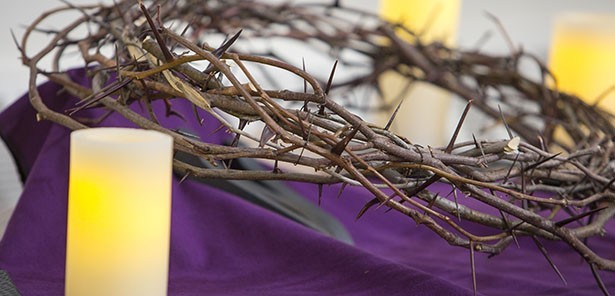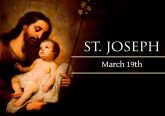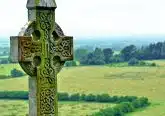February 6 – Saint Paul Miki and Companions
On Feb. 6, the Catholic Church honors the 26 Martyrs of Nagasaki, a group of native Japanese Catholics and foreign missionaries who suffered death for their faith in the year 1597.
During the 16th century, the Catholic faith reached Japan by the efforts of the Jesuit missionary Saint Francis Xavier (1506-1552). Jesuit outreach to the Japanese continued after his death, and around 200,000 Japanese had entered the Church by 1587.
Religious tensions led to a period of persecution during that year, during which many churches were destroyed and missionaries forced to work in secret. But few episodes of martyrdom took place during this time, and within a decade 100,000 more Japanese became Catholic despite the restrictions.
During 1593, Franciscan missionaries came to Japan from the Philippines by order of Spain’s King Philip II. These new arrivals gave themselves zealously to the work of charity and evangelism, but their presence disturbed a delicate situation between the Church and Japanese authorities.
Suspicion against Catholic missionaries grew when a Spanish ship was seized off the Japanese coast and found to be carrying artillery. Toyotomi Hideyoshi, a powerful imperial minister, responded by sentencing 26 Catholics to death.
The group was comprised of three native Jesuits, six foreign Franciscans, and several lay Catholics including some children. Sentenced to die by crucifixion and lancing, they were first marched 600 miles to the city of Nagasaki.
During the journey they underwent public torture meant to terrorize other Japanese believers in Christ. But all of the 26 held out courageously, even singing the hymn of praise “Te Deum” when they arrived at the hill where they would be crucified.
Three of the best-known martyrs of Nagaki are Saints Paul Miki, John of Goto, and James Kisai. Though none were priests, all were associated with the Jesuits: Miki was training for the priesthood, while Kisai was a lay brother and John of Goto was a catechist preparing to enter the order.
Paul Miki offered an especially strong witness to his faith during the group’s month-long march to Nagasaki, as he joined one of the captive Franciscan priests in preaching to the crowds who came to mock the prisoners.
The son of a wealthy military leader, Miki was born in 1562 and entered the Church along with the rest of his family. He joined the Jesuits as a young man and helped many Buddhists to embrace Christianity. His last act of evangelism took place as he hung on his cross, preaching to the crowds.
“The only reason for my being killed is that I have taught the doctrine of Christ,” he announced. “I thank God it is for this reason that I die. I believe that I am telling the truth before I die.”
“After Christ’s example, I forgive my persecutors. I do not hate them. I ask God to have pity on all, and I hope my blood will fall on my fellow men as a fruitful rain.”
St. Paul Miki and his 25 companions were stabbed to death with lances on Feb. 5, 1597, at the site that became known as “Martyrs’ Hill.” Pope Pius IX canonized the Martyrs of Nagasaki in 1862.













